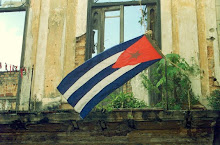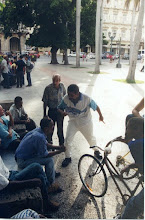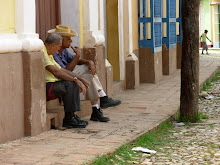“Now comes the hardest stage” of Cuba’s economic
reform process, Vice President Diaz-Canel recently said
in Havana. Others of higher and lower
rank have been saying the same thing.
What do they mean?
State enterprises may be the toughest nut to crack. Many are not profitable, and if the
government proceeds with its plan to shutter those that lose money, it will realize
fiscal savings but also put people out of work.
Easy for an accountant, tough for a politician.
In recent National Assembly sessions (see coverage in Reuters,
Granma,
Juventud
Rebelde), reform czar Marino Murillo indicated that the government will
proceed along these lines in 2014.
Enterprises will receive greater autonomy, he said, by being permitted
to use half of their after-tax profits either for investment or to increase
worker pay, and through other measures.
As for the unprofitable companies, he said, “We can’t make a plan that includes companies like
these. Either they downsize, or they
merge with another enterprise, or they undergo a process of investment to
improve them, because otherwise the phenomenon of having to finance these
losses will persist.”
As the government
downsizes its bureaucracy and its enterprises, it needs a strong private sector
that generates jobs for excess state sector workers. In that connection, it’s good news that the
entrepreneurial sector, now triple
its size in 2010, continues to grow.
But more is needed,
larger-scale enterprises that can employ professionals and others in larger
numbers, including in production of high-value-added goods and services.
The new
law on private non-farm cooperatives is in effect, moving slowly in its
pilot project phase. 197 have
been authorized, according to a labor ministry official; in the Artemisa
province there are 15 – 12 farmers
markets plus a bus cooperative, another that recycles and sells
construction materials, and a construction cooperative.
Most of these new cooperatives are converted state enterprises. An official told state media that if the
government decides to convert a state enterprise into a cooperative and the
workers are not interested, then “the building and the equipment are put out to
public bidding.”
But Presna
Latina reported July 8 that the new cooperatives include 12 start-ups from
the “non-state sector,” these consist “of self-employed workers mainly.” (See coverage from AFP,
Juventud
Rebelde, and the Economist.)
Another way to
generate jobs is through foreign investment, an issue that introduces a tension
between the benefits of using foreign capital and know-how, and the risk – from
the Cuban socialist perspective – of ceding a little bit of economic
sovereignty in every joint venture. This
conflict surely explains, to take one small example, the decade-long wait
between the tourism ministry’s identification of the need to build new golf
courses and the recent approval of the first project.
The economic policy guidelines approved by the Communist Party in 2011
call for increasing foreign investment by adding new criteria by which projects
may be approved, by seeking partners from new countries, and by shortening the
time the government takes to make decisions on projects.
Recently there has been lots of talk in Havana about updating the 1995
foreign investment law. But a vice
minister told
AP this month that a new law is not in the cards; instead, Cuba is likely to
“update certain regulations” to accomplish the job. Projects are being prepared in mining,
tourism, renewable energy, and the food industry, he said.
Finally, in his July 7 speech
to the National Assembly, Raul Castro called Cuba’s dual-currency system “one
of the most important obstacles to the progress of the nation,” causing an “inverted
pyramid” where people with greater responsibility are paid less. It also means that Cuba lacks a functioning
price system, which means distortions in both the state and private sectors that
impede efficiency, competitiveness, and rational allocation of resources.
Unification of the
currency, Raul said, will allow “more far-reaching and deeper transformations
in questions of salaries and pensions, prices and fees, subsidies and payments.” The result will be that “all able citizens
feel an inventive to work legally once the law of socialist distribution is
re-established: from each according to his capacity, to each according to his
work.”
The problem is how
to get there. A sudden unification of
the currency would create winners and losers – for instance, if the convertible
peso were to become the new currency at the rate of ten Cuban pesos per
convertible peso, those earning state salaries would gain and those earning
convertible pesos would lose. Someday,
the government will have to manage the politics of that.
Then there is the
problem of state enterprises, which use a 1:1 exchange rate instead of the 25:1
rate in currency exchange houses. In
recent briefings for foreign journalists, Cuban officials told
the Economist that the first step toward currency reform is about to take
place, where state enterprises will have new exchange rates for their foreign
trade. They will be, a Cuban economist
speculated, 12:1 for exports and 7:1 for imports.
So this is the hard part,
not least because these and other changes are being pushed through a
bureaucracy steeped in 50 years of centralization. But these changes can also put the Cuban
economy on a stronger footing than before, ending the policy patchwork that has
held things together since Soviet support ended two decades ago.






No comments:
Post a Comment